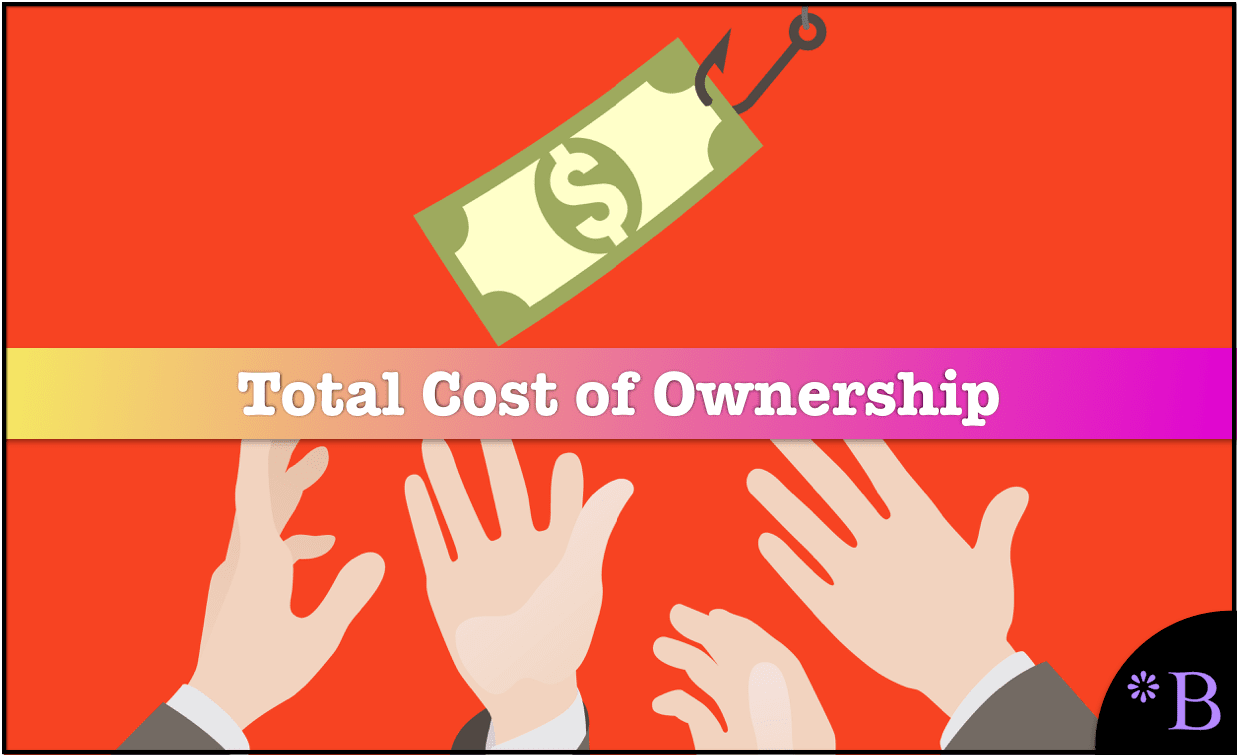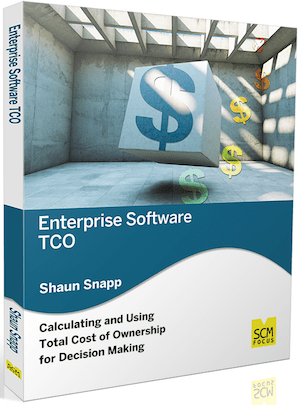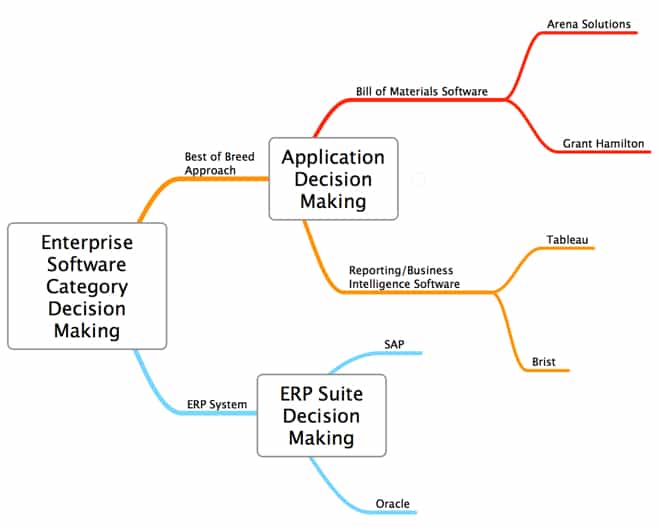
Enterprise Software TCO: Calculating and Using Total Cost of Ownership for Decision Making
Article Terms: ERP Implementation, Enterprise Software, Solution Architecture, Software Cost, Implementation Cost, IT Maintenance Cost, Best of Breed
What The Book Covers
Total Cost of Ownership is critical to good software decision making. However, Total Cost of Ownership is both infrequently performed, and often poorly performed when attempted. However, a lack of use of TCO has been behind some of the significant errors in software decision making. This includes the over-investment in ERP software and the under-investment in the best of breed solutions. This book explains both how to use Total Cost of Ownership as a decision-making tool between various applications within the same category, but also how to make the broadest IT decisions, such as those related to overall solution architecture, and the integration of best of breed solutions in a far more informed manner. Examples of this analysis are the following:
- Best of Breed Software Comparisons
- Big ERP Versus Tier 2 ERP
- Big ERP Versus No ERP
- ERP Versus Best of Breed
- Two Tier ERP Versus Other ERP Strategies
- Cloud ERP Versus On Premises ERP
The graphic from the book below explains the scope over which TCO can be used.
This book is tied to the book The Real Story Behind ERP, with the lack of proper analysis in multiple dimensions explaining the uptake of solution categories which are not validated by evidence. Furthermore, the book addresses many of the criticisms of TCO. And that while some of the points that are brought up are issues, that there are adjustments that can be made — and modifications that are not that complex. And that can drastically improve the applicability of TCO from the most narrow to the broadest software decisions. These are our software categories for TCP.
- Software Cost
- Hardware Cost
- Implementation Cost
- Maintenance Cost
This approach can be used for any category of application software and is what we use to evaluate BI, supply chain planning, ERP, CRM, PLM, and financial systems. A second book that this book is tied to is Enterprise Software Selection, as Total Cost of Ownership is an essential input into the software selection process.
Back Cover
Do you know the Total Cost of Ownership for your software purchase?
Text in the wave in the center of the cover:
The Total Cost of Ownership is so much more than just your upfront software costs.
One aspect of making a software purchasing decision is to compare the Total Cost of Ownership, or TCO, of the applications under consideration: what will the software cost you over its lifespan? But most companies don’t understand what dollar amounts to include in the TCO analysis or where to source these figures, or, if using TCO analyses produced by consulting and IT analyst firms, how the TCO amounts were calculated and how to compare TCO across applications. Not only will this book help you appreciate the mechanics of Total Cost of Ownership, but you will also gain insight as to the importance of TCO and understand how to strip away the biases and outside influences to make a true TCO comparison between applications.
By reading this book, you will:
- Understand why you need to look at Total Cost of Ownership and not just ROI when making your purchasing decision.
- Discover how an application, which at first glance may seem inexpensive when compared to its competition, could end up being more costly in the long run.
- Gain an in-depth understanding of the cost categories to include in an accurate and complete TCO analysis.
- Learn why ERP systems are not a significant investment based on their TCO.
- Find out how to recognize and avoid superficial, incomplete, or incorrect TCO analyses that could negatively impact your software purchase decision.
- Appreciate the importance and cost-effectiveness of a TCO audit.
- Learn how Brightwork Research & Analysis can provide you with unbiased and well-researched TCO analyses to assist you in your software selection.
Chapters
- Introduction
- The Basics of TCO
- The State of Enterprise Total Cost of Ownership
- ERP Software: The Multi-Billion Dollar TCO Failure
- The Total Cost of Ownership Method Used
- Using Total Cost of Ownership for Better Decision Making
Table of Contents
Chapter 1: Introduction
- Objectives of the Book
- Books and other Publications on Enterprise Software TCO
- My Background and the Book’s Focus and Orientation
- How Writing Bias Is Controlled at Brightwork Research & Analysis and Brightwork Research & Analysis Press
- The Approach to the Book
- The Brightwork Research & Analysis Site
- Intended Audience
- Abbreviations
- Corrections
Chapter 2: The Basics of Total Cost of Ownership
- What is Total Cost of Ownership?
- Sales and Marketing and TCO
- TCO Versus ROI
- How ROI and TCO are connected.
- Net Present Value and TCO
Chapter 3: The State of Enterprise TCO
- The Relationship to TCO
- Why (Some) Software Vendors Do Not Want Accurate TCO (or ROI) Calculated
- Software Vendors Faking Enthusiasm for TCO
- Why Consulting Companies Do Not Want Accurate TCO Calculated
- Why (Even) Purchasing Companies May Not Want TCO Calculated
- Why IT Analysts Don’t Want TCO Calculated
- The Warner Brothers Example
- Other TCO Failures
- Finding Help with TCO Calculation
- Is TCO Even Possible?
- Conclusion
Chapter 4: ERP: The Multi-Billion Dollar TCO Analysis Failure
- Did Logic and Analysis or Trendiness Drive ERP Procurement Decisions?
- Measuring Success?
- The High TCO of ERP
- The High Opportunity Cost of ERP
- Conclusion
Chapter 5: The Total Cost of Ownership Method Used
- TCO
- The TCO Cost Categories
- Software/License Costs
- Hardware Costs
- Implementation Costs
- Multiple-based Estimation of Implementation Costs
- Training Costs
- Integration Costs
- Maintenance Costs
- The Company uses total Years the Application
- Internal-Support Costs and Outsourcing
- Analyzing Project Risk
Chapter 6: Using Total Cost of Ownership for Better Decision Making
- Example: Total Cost of Ownership and Continuous Improvement
- The Combined Enterprise Evaluation Method
- The Normalization Adjustments
- Calculating the Total Cost of Ownership Per Year
- Adjusting for SaaS Versus On-premises Solutions
- Adjusting for Implementation Duration
- Adjusting for Training Costs
- Adjusting for the Internal Maintenance Costs
- Adjusting for the Number of Users
- Using TCO for the Broadest Decision Making
- Conclusion
Appendix A: How to Use Independent Consultants for Total Cost of Ownership

Buy Now
Questions about the Book?
Do you have any questions about the book? If so, please leave us a comment in the message box to the right, and we will address them.
